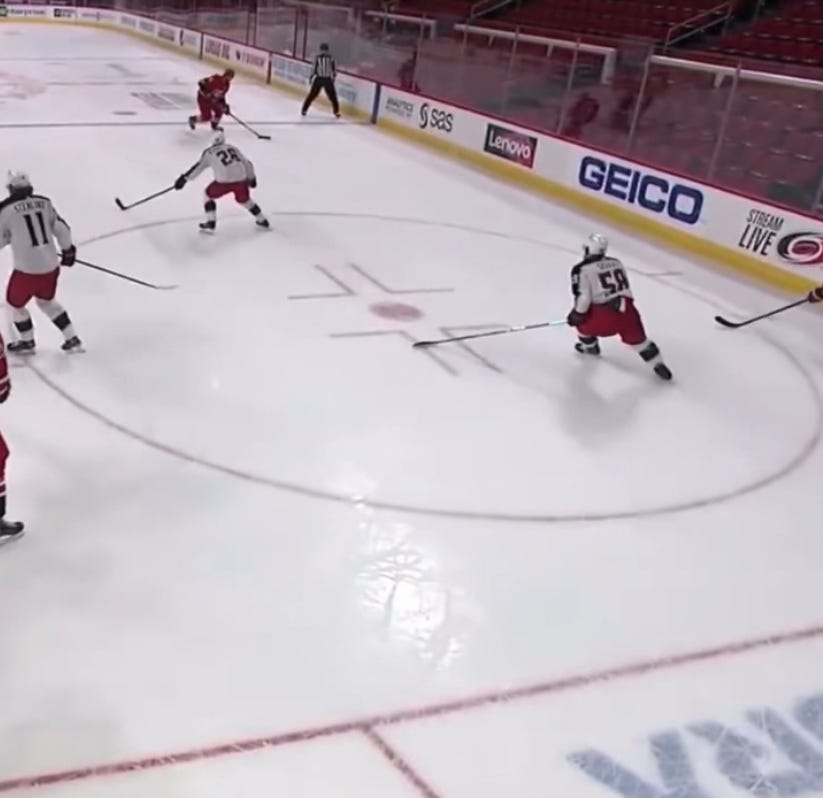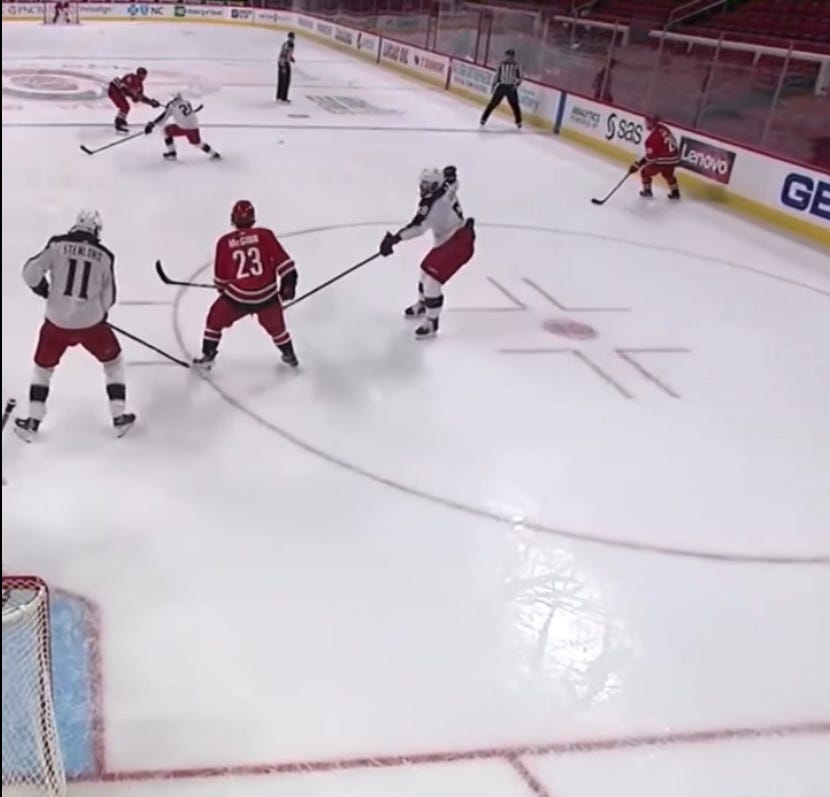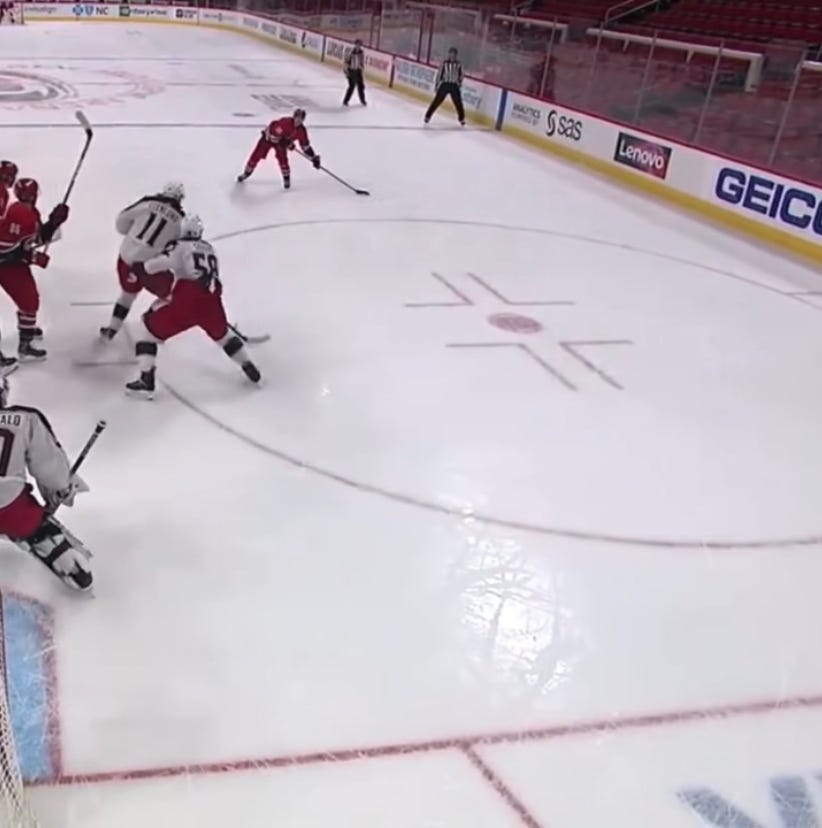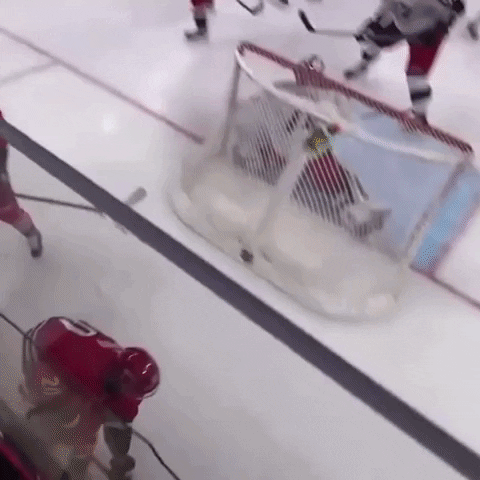Offensive Hockey: Working Up, With Sebastian Aho
Preparing for your puck touch on the flanks
In hockey, and in life, “preparation prevents piss-poor performance”. How players prepare and set up their puck touches makes all the difference. The best players understand how to play in the future and create advantageous conditions and situations.
There are many examples like building speed behind and off the puck, but the easiest and most obvious example of preparing for a puck touch is what I call “working up.”
Working Up
Working up is the concept of skating away from the goal and “up” the wall and subsequently gaining momentum to attack “down” into the zone.
The keys to preparing for this puck touch:
Timing the attack for when their opposition is most vulnerable
Gaining momentum to attack with speed and threaten the defender
Develop a body orientation toward the goal that allows for multiple options
Timing and Applying Pressure
By taking the extra stride(s) further away from the net and timing out the puck reception, the attacking player edges the situation into his advantage. Players are then able to immediately pass opponents with speed and apply pressure on the next defensive layer.
Forcing Switches
The first two examples are on the power play where a player has a ton of time and space to implement this technique. You can see true offensive genius when players start to understand how this can apply at even strength. Let’s break down this clip from Sebastian Aho against the Columbus Blue Jackets.
Defensive Zone Coverage
Every NHL team plays some combination of zone, man-on-man, or hybrid defensive zone coverage. The Blue Jackets’ defensive coverage here was zonal defense. Here is the general idea:
Defenders patrol and control the net front and anything below the hashmarks.
Wingers defend the high ice on their half of the ice.
The center is responsible for the middle and the second layer if a teammate gets beat.
What happens if a player leaves one defender’s zone and goes into another? How seamless is the handoff? What happens if that player is already defending another opponent?
“Working up” creates a problem for the defensive team, who must communicate in order to solve and if they don’t or are slow to solving the questions asked by the offensive team, they’ll be giving up a lot of time and space that gets converted to offensive chance. Often this simply leaves a high 2v1 in a winger’s defensive sector.
Diving into The Video
Let’s break this down in pieces…
Aho (#20 red) is skating the puck behind the net and is chased by right-side defenseman (#58 white). Aho passes the puck to the point.
Rather than skating to the net, Aho continues his movement up high into the offensive zone. At this point, #58 disconnects at the hashmark-level and heads back to the net front where his defensive responsibility is. Meanwhile, the center (#11 white) is covering the middle/net front
As Aho moves away from the net and defending players, he is left all alone. His teammate (#74 red) at the point has been dragging the winger (#28 white) toward the middle and away from the space Aho is about to use. #58 reads this switch and does his best to communicate to the center, who should be now picking up Aho.
Even if done quickly, the center is coming from low in the middle and would have a hard time closing that space.
The NHL is a quickly evolving cat-and-mouse game. This exact situation is why many NHL teams now play a hybrid system where if the puck is low they play zone coverage and if the puck goes high they play man-on-man. Without the switch to man-on-man above the hashmarks, the offensive team would consistently find 3v2s.
Preparation For Puck Touch
“Working up“ is just one example of preparing for your puck touch. What else can you think of?
Hint… speed away from the puck is another!
And remember, preparation prevents piss-poor performance.
Further Reading








